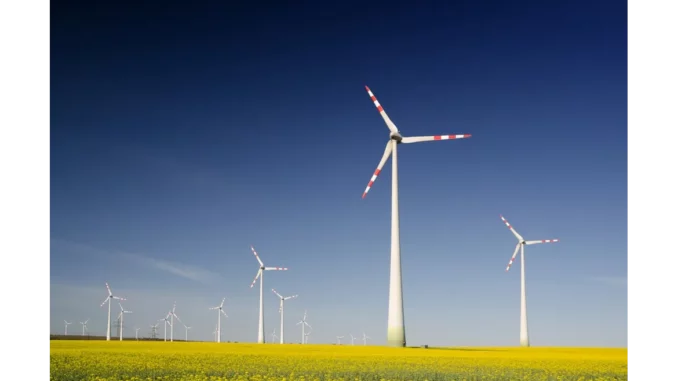
Summary
Investing in Clean Energy: Uncovering Hidden Challenges and Opportunities
As the global transition towards clean energy accelerates, investors and policymakers are confronting unforeseen challenges that complicate the shift to sustainable power sources. This article explores vital questions, challenges, and debates within the clean energy sector, highlighting both the hidden costs and potential opportunities.
Main Article
Hidden Costs of Clean Energy
While clean energy is celebrated for its environmental benefits, its financial and ecological costs are frequently underestimated. The lifecycle of renewable technologies—from resource extraction and manufacturing to eventual decommissioning—demands considerable energy and can leave a substantial carbon footprint. For instance, the extraction of rare earth elements, essential for producing solar panels and wind turbines, leads to significant environmental degradation. As a result, balancing these concealed costs with the environmental benefits remains a critical dilemma for investors and policymakers.
Energy Storage: An Overlooked Challenge
As renewable energy sources, like solar and wind, are increasingly integrated into national power grids, the effective storage of this energy is emerging as a substantial engineering challenge. Current battery technologies face several limitations, including duration, cost, and ecological impact. Consequently, investors in clean energy are particularly interested in advancements in energy storage solutions that promise to stabilise power supplies. Without reliable storage, the intermittent nature of renewables can lead to grid instability and operational inefficiencies.
Potential of Urban Infrastructure
Urban areas pose both challenges and opportunities for clean energy implementation. As major energy consumers, cities also offer unique opportunities for innovation with rooftop solar installations, smart grids, and energy-efficient buildings. However, retrofitting existing urban infrastructure to accommodate these technologies necessitates significant investment and policy support. Urban centres have the potential to become hubs of clean energy innovation, but this potential often goes untapped due to financial and logistical barriers.
Geopolitical Dimensions
Clean energy is not solely an environmental issue but a geopolitical one as well. As nations compete for control over essential materials and technologies, energy independence and security have become pressing concerns. The way countries navigate this evolving landscape could fundamentally alter global power dynamics, creating both opportunities and tensions. The shift from fossil fuels to renewables could redistribute economic and political power, with nations rich in renewable resources gaining newfound influence.
Advantages vs. Disadvantages
Advantages:
– Clean energy technologies significantly reduce greenhouse gas emissions, aiding in combating climate change.
– Investment in clean energy can spur job creation in emerging sectors and stimulate economic growth.
– Renewable energy sources, such as wind and solar, offer long-term price stability as opposed to volatile fossil fuels.
Disadvantages:
– The initial costs of establishing renewable energy infrastructures are substantial.
– Energy production can be inconsistent, necessitating enhanced grid and storage technologies.
– The environmental impact of manufacturing and disposing of renewable technology components can sometimes negate the benefits.
Key Controversies and Future Directions
A major controversy centres on the equitable transition to clean energy. As wealthier nations advance, concerns arise about leaving developing countries behind due to financial and technical barriers. This raises complex questions about how aid and technology transfer should be managed globally to ensure a fair energy transition. Ensuring that all nations can partake in and benefit from the clean energy revolution is crucial for global sustainability.
Detailed Analysis
The complexities of transitioning to clean energy highlight the need for a nuanced understanding of both the advantages and disadvantages. While clean energy provides a path to reduce carbon emissions and mitigate climate change, it also presents unforeseen challenges that must be addressed. For instance, the environmental impact of extracting and disposing of materials needed for renewable technologies can inadvertently contribute to ecological degradation.
Moreover, the economic implications are significant. High initial investment costs for renewables can deter adoption, especially in less affluent regions. Yet, the long-term benefits, including job creation and energy price stability, present compelling reasons for continued investment. Policymakers must weigh these factors carefully, considering both immediate impacts and future gains.
Geopolitically, the shift towards renewable resources has the potential to redefine international relations, as countries rich in these resources may gain leverage. This presents an opportunity for reshaping global power dynamics, but also raises concerns over energy security and independence.
Further Development
As the clean energy sector evolves, several key questions remain unanswered. How will nations navigate the geopolitical landscape as they vie for control over critical resources? What role will emerging technologies, such as hydrogen and geothermal energy, play in the future energy mix? How can policymakers ensure that the transition to clean energy is equitable and inclusive, particularly for developing countries?
Future developments in energy storage technologies will be crucial in addressing the intermittency issues of renewable sources. Additionally, the role of urban infrastructure in facilitating clean energy adoption will be an area of increasing focus. Policymakers and investors must remain adaptable, as the journey towards a sustainable energy future is fraught with both challenges and opportunities. Readers are encouraged to follow this dynamic story through platforms like Bloomberg and National Geographic for in-depth coverage and updates.

